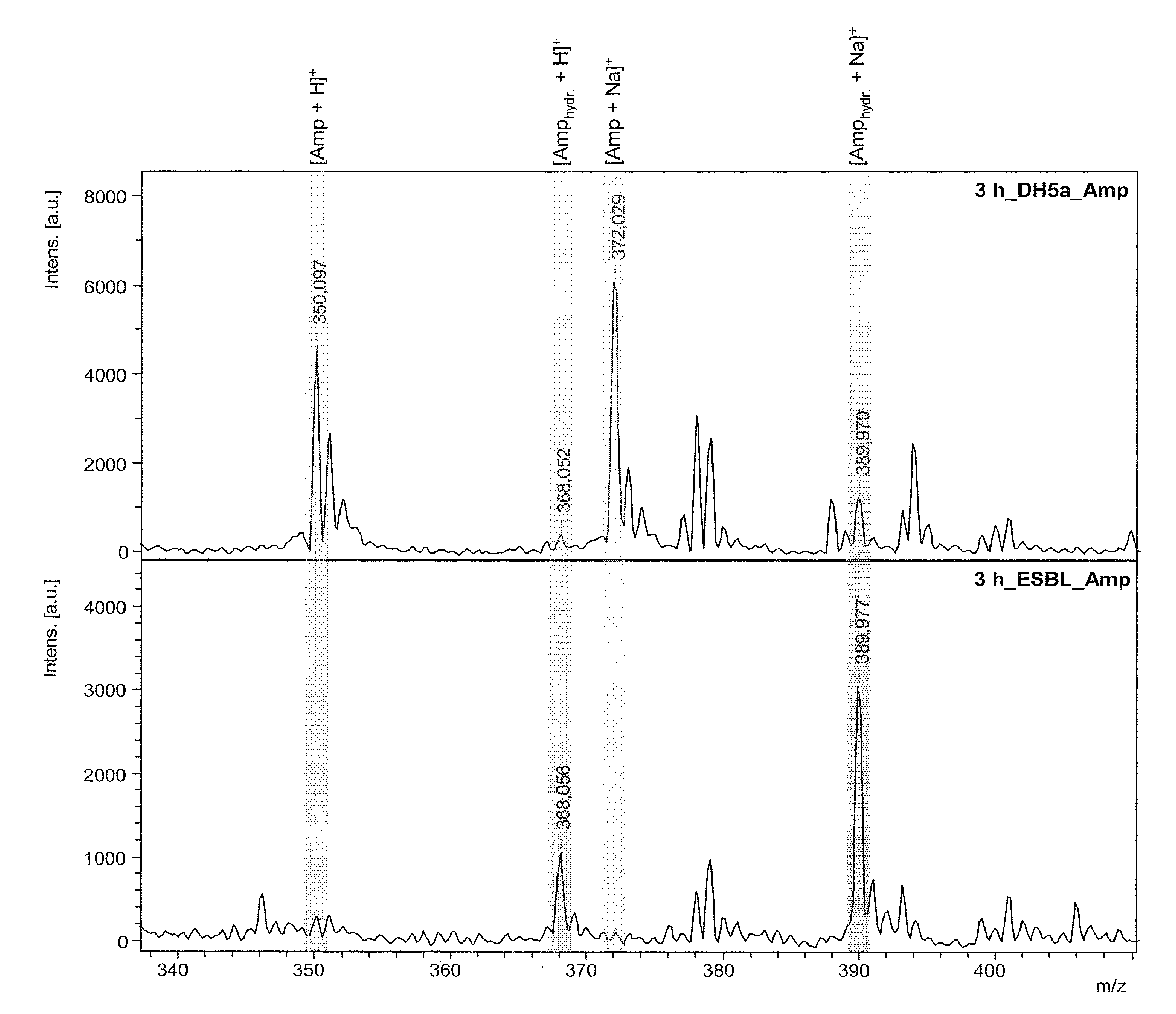Mass spectrometric measurement of b-lactamase resistances
- Summary
- Abstract
- Description
- Claims
- Application Information
AI Technical Summary
Benefits of technology
Problems solved by technology
Method used
Image
Examples
Embodiment Construction
[0027]The invention provides a very simple and fast method of determining microbial resistances based on the generation of β-lactamases by the microbes, particularly by bacteria.
[0028]The method basically adds one or more suitable substrates to a suspension of the bacteria. The substrates can be either β-lactam antibiotics or preferably customized β-lactam derivatives. If the bacteria have a β-lactamase resistance, at least one substrate is broken down by the β-lactamase under suitable incubation conditions in minutes to hours, by hydrolytically opening the β-lactam ring. This hydrolytic breakdown of the substrate by the β-lactamases can be directly measured mass spectrometrically. The amount of substrate decreases, and is replaced by the hydrolyzed cleavage product, whose mass is 18 atomic mass units heavier.
[0029]In FIG. 1 this breakdown, occurring only when a resistance exists, is shown using the β-lactam antibiotic ampicillin in two mass spectra. The top mass spectrum shows the ...
PUM
 Login to View More
Login to View More Abstract
Description
Claims
Application Information
 Login to View More
Login to View More - R&D
- Intellectual Property
- Life Sciences
- Materials
- Tech Scout
- Unparalleled Data Quality
- Higher Quality Content
- 60% Fewer Hallucinations
Browse by: Latest US Patents, China's latest patents, Technical Efficacy Thesaurus, Application Domain, Technology Topic, Popular Technical Reports.
© 2025 PatSnap. All rights reserved.Legal|Privacy policy|Modern Slavery Act Transparency Statement|Sitemap|About US| Contact US: help@patsnap.com


